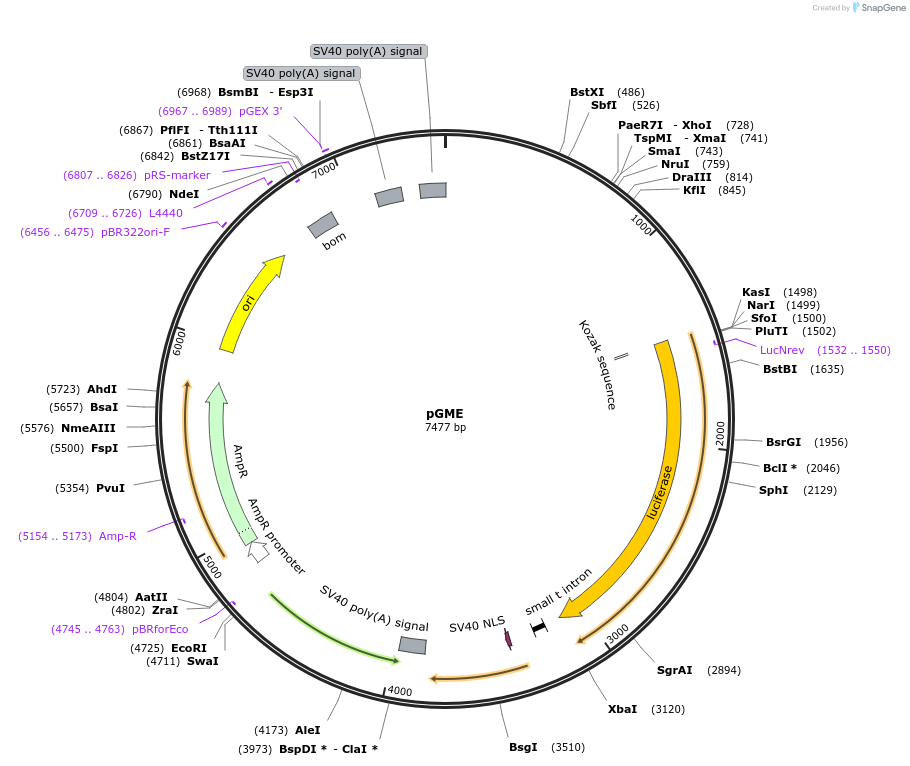pGME
(Plasmid
#71252)
-
Purposeluciferase reporter with GM-CSF promoter + 717 bp Bgl II GM-CSF enhancer
-
Depositing Lab
-
Sequence Information
Ordering
| Item | Catalog # | Description | Quantity | Price (USD) | |
|---|---|---|---|---|---|
| Plasmid | 71252 | Standard format: Plasmid sent in bacteria as agar stab | 1 | $89 | |
Backbone
-
Vector backbonepGM
-
Backbone manufacturerCockerill lab, Addgene plasmid 71250
- Total vector size (bp) 6766
-
Vector typeMammalian Expression, Luciferase
Growth in Bacteria
-
Bacterial Resistance(s)Ampicillin, 100 μg/mL
-
Growth Temperature37°C
-
Growth Strain(s)DH5alpha
-
Copy numberHigh Copy
Gene/Insert
-
Gene/Insert nameGM-CSF enhancer
-
Alt namecolony stimulating factor 2 (granulocyte-macrophage)
-
SpeciesH. sapiens (human)
-
Entrez GeneCSF2 (a.k.a. CSF, GMCSF)
- Promoter GM-CSF
-
Tag
/ Fusion Protein
- luciferase (C terminal on backbone)
Cloning Information
- Cloning method Restriction Enzyme
- 5′ cloning site BglII (not destroyed)
- 3′ cloning site BglII (not destroyed)
- 5′ sequencing primer unknown
- 3′ sequencing primer LucNRev
- (Common Sequencing Primers)
Terms and Licenses
-
Academic/Nonprofit Terms
-
Industry Terms
- Not Available to Industry
Trademarks:
- Zeocin® is an InvivoGen trademark.
Depositor Comments
Note that the 717-bp GM-CSF enhancer contains an extra G at position 118 from the sequence published in Cockerill et al. Proc Natl Acad Sci USA. 1993;90:2466–2470.
JM109 are the cells used by the author for pXPG and its derivatives.
These plasmids were created by your colleagues. Please acknowledge the Principal Investigator, cite the article in which the plasmids were described, and include Addgene in the Materials and Methods of your future publications.
-
For your Materials & Methods section:
pGME was a gift from Peter Cockerill (Addgene plasmid # 71252 ; http://n2t.net/addgene:71252 ; RRID:Addgene_71252) -
For your References section:
The human granulocyte-macrophage colony-stimulating factor gene is autonomously regulated in vivo by an inducible tissue-specific enhancer. Cockerill PN, Bert AG, Roberts D, Vadas MA. Proc Natl Acad Sci U S A. 1999 Dec 21;96(26):15097-102. PubMed 10611344



